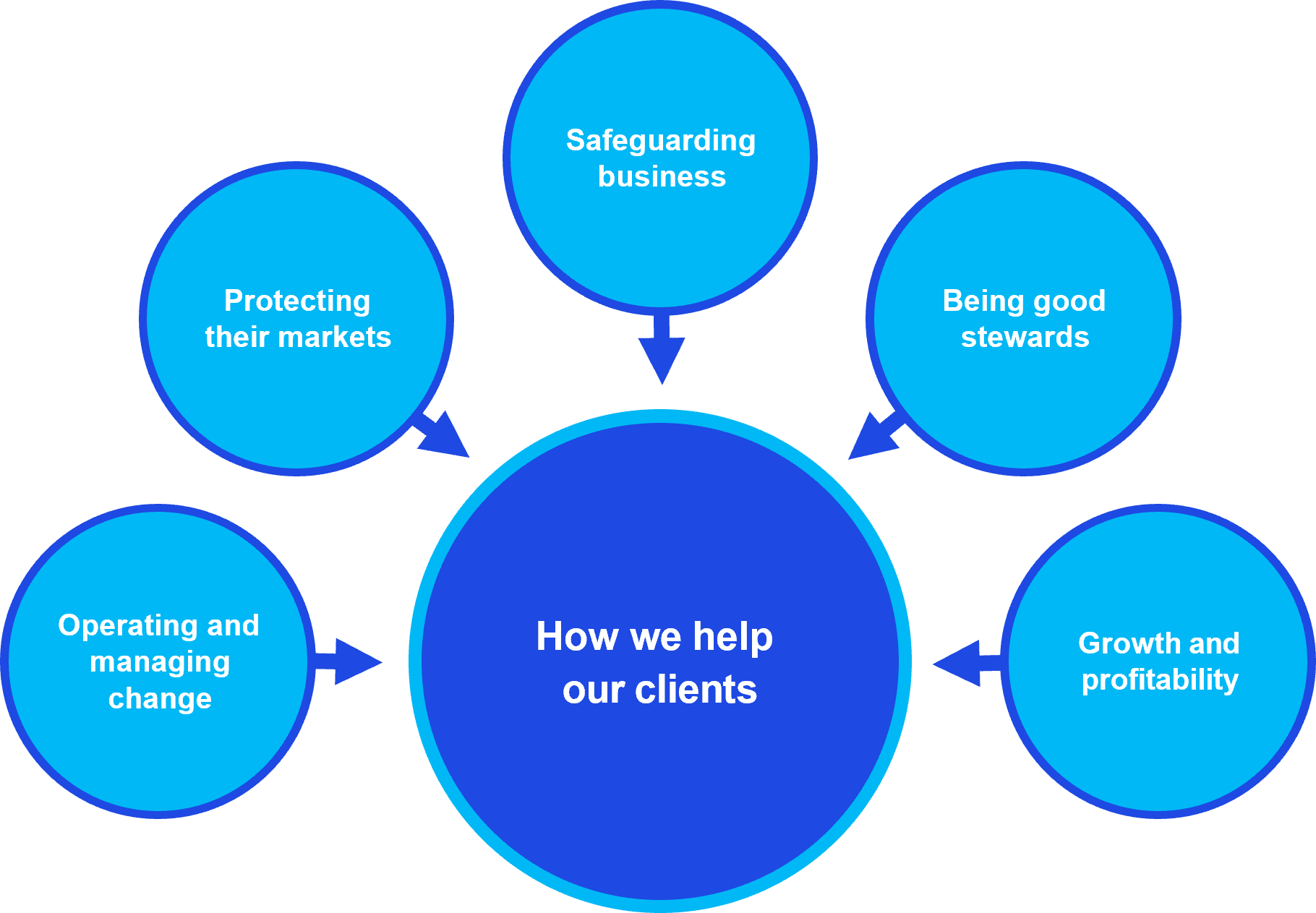Balance cost, efficiency, and effectiveness
Considerations for Risk & Compliance leaders

KPMG financial services risk, regulatory and compliance solutions for growth and profitability
Across the financial services sector, organizations face increasing pressure to grow, enter new markets, and innovate while working against the need to do more with less. This dynamic is not unique to the financial services industry. What is unique, however, is the highly complex nature of the risk, regulatory and compliance landscape that firms must navigate. First and second line executives have labored successfully to balance the cost associated with effectively managing risk with the commercial realities of the business—no small matter. However, economic headwinds before us, the high price of labor, heightened regulatory expectations1 and the increased commercial needs that come with growth all conspire to dislocate a carefully aligned cost-to-value ratio and to permanently alter the cost-growth curve. This has led to an increased focus on optimizing spends, impacting the risk and compliance function in material ways.
KPMG understands that the risk and compliance functions are not immune to these cost optimization pressures and will be asked to contribute to the periodic rebalancing of spend to align with both the commercial needs of the business and the regulatory requirements associated with its size. Further, we appreciate the challenges associated with cost optimization efforts in this function when many of their efforts are targeted at resolving substantial matters brought to the organization by one or more of their regulatory partners. The reality is that risk and compliance functions across the first and second line will need to reset the baseline of what it will take to meet their various obligations today, while altering the slope of the cost curve associated with new requirements sure to come.
To that end, KPMG has devised a series of offerings focused on addressing this challenge. In principle, these offerings drive progression across a set of targeted benefits that ultimately enable such functions to operate more leanly with a firmer foundation to scale with the business in a manner that adds cost slowly over time. In essence, this is achieved by endeavoring to simplify, modernize, and optimize.
The market is focused on reducing cost
Source: KPMG "New Cost Imperatives in Banking," https://assets.kpmg.com/content/dam/kpmg/xx/pdf/2021/04/new-cost-imperatives-in-banking.pdf | PDF, 2021
83%
Firms refocusing their cost optimization efforts
85%
Firms accelerating their cost optimization efforts
66%
Firms looking to reduce their cost basis by more than 10% in 3 years
Three value drivers of risk and compliance functions
In our experience, risk and compliance functions can harness three key levers to drive risk and compliance efficiency. Firms can leverage these solutions to help them balance cost, efficiency, and effectiveness and ultimately achieve sustainable scalability across the organization:
- Control Assurance Convergence
- Regulatory Obligation Management
- Fraud
- Model Risk As-a-Service
- Risk and Compliance Convergence
- Credit Reimagined
- Surveillance Strategy
- Supervision Strategy and Optimization
1
Simplify
- Rationalize the disparate risk, compliance, and control assurance frameworks, roles, and responsibilities, and converge functions, data, tools, processes, methods, governance, and reporting within and across the first and second lines
- Normalize, reengineer, and automate stable, repeated processes
2
Modernize
- Migrate risk and compliance controls into core platforms and digital-business environments and adjust first and second line accountabilities
- Integrate advanced technology, AI, and data & analytic techniques and retire legacy approaches and implement more cost-effective methods
- Migrate environments to the cloud
3
Optimize
- Utilize quantitative and empirically proven methods to improve the quality of alerts and reduce the volume requiring resolution
- Migrate workforce to more efficient and lower cost execution models, including “As-a-Service” execution
- Source “Staff-to-Expected” / “Surge-to-peak” resourcing
Solutions to balance cost and efficiency
KPMG has developed the following solution suite to deliver against cost and efficiency needs our clients are addressing today.
| Solution | Benefits Delivered | Scale of Opportunity | Value Drivers | ||
|---|---|---|---|---|---|
| Simplify | Modernize | Optimize | |||
| Control Assurance Convergence | A control assurance framework that will:
| High |  |  |  |
Regulatory Obligation Management | Technology-enabled global regulatory change identification and management framework to:
| High |  |  | |
| Fraud | Advanced approach to fraud analytics and technology to:
| High |  |  |  |
| Model Risk As-a-Service | A technology enabled "As-a-Service" offering to:
| High |  |  |  |
| Risk and Compliance Convergence | A comprehensive method to simplify all first and second line risk and compliance frameworks and functions to principally:
| High |  |  |  |
| Credit Reimagined | Front-to-back reengineering of credit processes and methods to:
| Med - High |  |  | |
| Surveillance Strategy | Employ data, advanced analytics, machine learning, and “As-a-Service” skilled resourcing to:
| Medium |  | ||
| Supervision Strategy and Optimization | Deploy methods developed in Risk Simplification to reengineer Supervisory functions in markets businesses to:
| Medium |  |  |  |
Turn challenges into opportunities

KPMG has evolved its service offerings to deliver against the spectrum of needs our clients have as they navigate the complex business and operating environment of the global marketplace. Each of our offerings were designed to deliver against the value our clients seek across their growth, cost and efficiency, regulatory, and market stewardship needs. As your organization’s needs evolve, KPMG can work with you to migrate your firm and its capabilities to a state where you are better prepared for the challenges that lie ahead.
Explore the levers Risk and Compliance leaders can deploy to sustainably reduce the cost to support the risk and compliance agenda.
Footnotes:
1KPMG “Top 10 Regulatory Challenges of 2023” reiterate how Financial Services regulators continue to raise the bar on expectations of covered entities and institutions "Ten Key Regulatory Challenges of 2023"
2KPMG “New Cost Imperatives in Banking”,https://assets.kpmg.com/content/dam/kpmg/xx/pdf/2021/04/new-cost-imperatives-in-banking.pdf
Dive into our thinking:
The New Imperative to Balance Cost, Efficiency, and Effectiveness
Download PDFExplore more
Popular category topics
Meet our team




